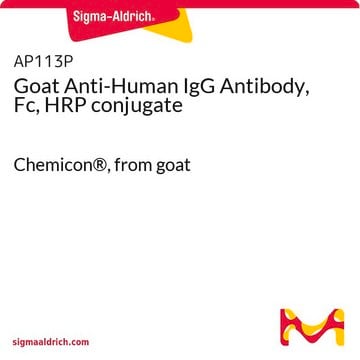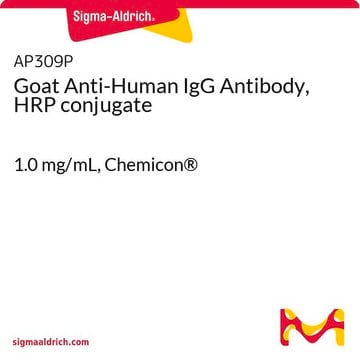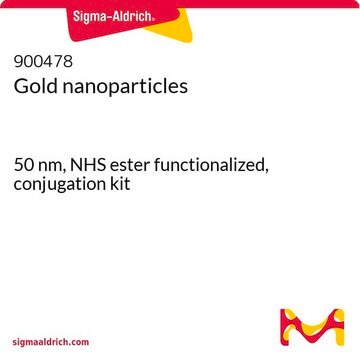AP112P
Goat Anti-Human IgG Antibody, HRP conjugate
Chemicon®, from goat
Synonym(s):
Anti-Human IgG HRP Conjugate
About This Item
Recommended Products
biological source
goat
Quality Level
conjugate
peroxidase conjugate
antibody form
affinity isolated antibody
antibody product type
secondary antibodies
clone
polyclonal
form
lyophilized
species reactivity
human
manufacturer/tradename
Chemicon®
technique(s)
ELISA: suitable
western blot: suitable
isotype
IgG
shipped in
wet ice
storage temp.
2-8°C
target post-translational modification
unmodified
General description
Specificity
Immunogen
Application
- to detect the bound immunoglobulin G (IgG) in enzyme-linked immunosorbent assay (ELISA) assay
- in immunohistochemistry or cytochemistry at a dilution of 1:500 - 1:5,000
- for western blotting with chromogenic substrates at a dilution of 1:5,000 - 1:100,000 and with ECL substrates at a dilution of 1:10,000 - 1:200,000.
- for EIA at a dilution of 1:5,000-1:100,000
Biochem/physiol Actions
Physical form
Storage and Stability
WARNING:
Use of sodium azide as a preservative will substantially inhibit the enzyme activity of HRP.
Other Notes
Whole Immunoglobulin Secondary Antibodies
Legal Information
Disclaimer
Not finding the right product?
Try our Product Selector Tool.
Storage Class Code
13 - Non Combustible Solids
WGK
WGK 3
Flash Point(F)
Not applicable
Flash Point(C)
Not applicable
Certificates of Analysis (COA)
Search for Certificates of Analysis (COA) by entering the products Lot/Batch Number. Lot and Batch Numbers can be found on a product’s label following the words ‘Lot’ or ‘Batch’.
Already Own This Product?
Find documentation for the products that you have recently purchased in the Document Library.
Customers Also Viewed
Related Content
Products and support for mpox research, offering world-class reagents for immunoassay and molecular assay development.
Products and support for mpox research, offering world-class reagents for immunoassay and molecular assay development.
Products and support for mpox research, offering world-class reagents for immunoassay and molecular assay development.
Products and support for mpox research, offering world-class reagents for immunoassay and molecular assay development.
Our team of scientists has experience in all areas of research including Life Science, Material Science, Chemical Synthesis, Chromatography, Analytical and many others.
Contact Technical Service











